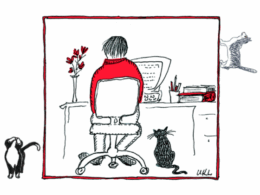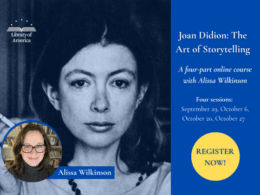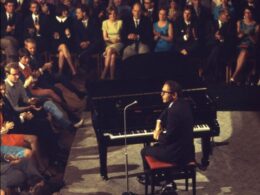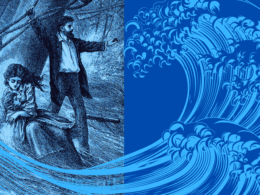By Maureen Howard
Delivered at Barnes & Noble Chelsea, New York City, on January 24, 2001 to celebrate Edith Wharton’s birthday and the publication of Edith Wharton: Collected Stories 1891–1910 and Edith Wharton: Collected Stories 1911–1937 by The Library of America
The occasion for these thoughts was a gathering for the publication of The Library of America’s two-volume Collected Stories of Edith Wharton. It was planned to coincide with her birthday, January 24. Wharton was drawn to writing ghost stories, so I felt perfectly comfortable with the fact that she might be with us on that night, haunting us in the streets of Chelsea where she was born, or perhaps grazing the aisles of the Barnes and Noble bookstore—appalled at the self-help books, but curious about women’s studies. Though she would not find the fine leather bindings or the first editions prized by several of her gentlemen, both fictional and real, with aesthetic sensibilities, I think she would be enormously pleased by the Library of America’s handsomely published volumes of her stories, even bask in being toasted in a glittering bookshop designed for a vast public. Her business instinct, once she got her career up and going, was sharp. In her prime, she was deft in dealing with her publishers. Edith Wharton and I share an agent—the Watkins/Loomis Agency which still holds her later work in copyright, so I know some of her commercial secrets and her strict attention to advances and royalty statements. I was happy with the notion of her ghostly presence, but if she had appeared as she is advertised on the flier for this event as the grand dame of American Letters, I confessed that I might have been flustered, for I’m never sure whether to call her Mrs. Wharton or Edith.
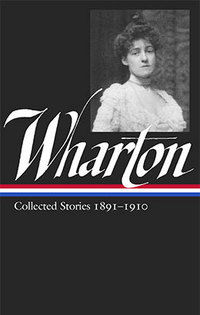
Having read and reread the stories in these two volumes, I think I will settle on Edith. My few words on her remarkable career as a storyteller will convey the intimacy that she presumed with her readers. I should say came to presume, for at the outset she was as uncertain of acceptance as most fledgling writers. When we read her earliest stories, we see that she was trying out material, searching out forms. Two early works are set in a somewhat gritty New York: “Mrs. Manstey’s View” and “Bunner Sisters,” a story that was rejected and published much later. Mrs. Manstey is a lonely widow in a boarding house, her view about to be obliterated by Trumpian progress. The Bunners are two impoverished women who keep a small shop with sewing supplies and decorate hats, seemingly not Wharton territory. But Wharton’s landscape in her stories and her novels was vast and various. As her readers, we must never forget that she was gifted with imagination, with the ability discovered in childhood to “make up.” In making up she understood that she must be solitary, apart. Well, isn’t that the life of a writer? “Mamma,” she said upon a social occasion that we would now call a play date, “you must go and entertain that little girl for me, I’ve got to make up.”
So there is fancy, a strong suit in Edith Wharton’s ghost stories and fables, but there is also her ability, not available to many of her heroines, to cross to other worlds. And the writer’s duty to observe. In these earliest stories we see that secondary gift of observation in the worn seams of poor Miss Bunner’s best dress and in Edith Wharton’s accounting of their poverty to the penny. This attention to detail of place is evident in every story, whether it is the fashionable drawing rooms of New York and Paris, or Kerfol, the spectral 16th century domain in Brittany from which one of her most chilling ghost stories takes its title, or the gaming tables of Cannes.
In another earlier story—one that she turned on as crude, that she would not allow to be republished in her lifetime—“The Fullness of Life,” her heroine dies and goes to an improbable heavenly place where she finds a soul mate, a man who can agree with her enthusiastic reflections on Florentine art and read with her—Dante, Goethe, Keats. And thus, in death, she leaves behind the dull husband. For dull husband we may read Teddy Wharton, to whom Edith had been married for eight years when she began to publish fiction. We must allow a biographical reading of this early story and Edith’s embarrassment over its frankness, but listen to this interchange between the soul mate and the dead woman:
“You were married,” said the Spirit, “yet you did not find the fullness of life in your marriage?”“Oh, dear, no,” she replied, with an indulgent scorn, “my marriage was a very incomplete affair.”
“And yet you were fond of your husband?”
“You have hit upon the exact word; I was fond of him, yes, just as I was fond of my grandmother, and the house that I was born in, and my old nurse. Oh, I was fond of him, and we were counted as a very happy couple. But I have sometimes thought that a woman’s nature is like a great house full of rooms: there is the hall, through which everyone passes in going in and out; the drawing-room, where one receives formal visits, the sitting-room, where members of the family come and go as they list; but beyond that, far beyond, are other rooms, the handles of whose doors perhaps are never turned; no one knows the way to them, no one knows whither they lead; and in the innermost room, the holy of holies, the soul sits alone and waits for a footstep that never comes.”
“And your husband,” asked the Spirit, after a pause, “never got beyond the family sitting-room.”
“Never,” she returned impatiently; “and the worst of it was that he was quite content to remain there.”
That’s grand on the part of our ghostly wife, the imagery decidedly womanish and witty, the wit being the writer’s portrayal of this innocent soul. With “The Fullness of Life,” Wharton was already writing at top form. Yes, her marriage was a very incomplete affair, but we tend to savor the facts of Edith Wharton’s life, to translate too easily from her circumstances to that of her characters, both men and women, the constricted emotional lives, their yearning. We can’t help but see the light touch as well as the clever irony in the early stories as the readers of Scribner’s did in the Nineties. But, as I look over the range of her writing, I note that Edith Wharton conceived of houses, dwelling places, in an extended imagery of shelter and dispossession. Houses—their confinement and their theatrical possibilities, would be of use to her throughout her career. They are not always the houses of the rich and they are never mere settings.
Wharton’s habitations are the garrets of struggling young artists and the bleak Berkshire home of Ethan Frome and the haunted shack in the same desolate New England landscape of one of her most powerful ghost stories, “Bewitched.” In “All Souls,” the title of her last story, written in 1937, a woman who has given her life to a family house in which she lives in pride and isolation, is dispossessed by the dead. She is literally spooked out of her house on November 2, the day on which the dead roam the earth, not by her ancestors she set such store in, but by the departure of the servants, by the dead telephone and electricity. Her world is over. And so, at that time, was Wharton’s house of fiction, that solitary place set aside from friends and fashion, the door then closed on her long industrious life of making up.
In reading Edith I prefer to attend to her setting of themes as with her use of houses, and to her mastery of the story form, and to make quick work of the biographical: Edith Newbold Jones Wharton was wealthy, privileged, and educated (privately and by her own perseverance with never ending pleasure). She married a sporting club man, had a passionate affair at forty, divorced, delighted in her friendships, and lived abroad—elegantly, of course—at a distance that gave her a useful perspective for her work, her particularly American art.
But what her readers must never put aside, given the fullness of her life, is her craft, which was amazingly accomplished from the start, and the depth of her imagination. Of the earliest tales, one that I am fond of is risky; “The Valley of Childish Things and Other Emblems” conforms to no idea of social satire or realistic reportage of a fashionable set beloved by Scribner’s readers. In its short parables it is pure Hawthorne, Hawthorne of the Tanglewood Tales or The Wonder Book, though Edith did not write for children. Her tale opens with the story of a woman and a man who return to the place of childhood to find that their old playmates are still “playing the same old games.” Another entry concerns “a little girl who was so very intelligent that her parents feared she would die.” It is a truly original notebook of a story (rather like the notebooks she kept all her life), yet she was secure in this cautionary tale: we are trapped in set ways, our comforts, our move forward countered by the past.
The early stories are replete with images of unmasking, of dropping the smooth social surface to get at the truth. In “The Lamp of Psyche,” a young married woman, who has adored her husband’s fastidious taste and his European manners, learns on a trip to Boston that he is a coward, was not in the Civil War. Many of her stories in the first volume are marriage stories of confinement or attempts at freedom, a freedom of physical passion and the suggestion of a moral alternative in the transgression of society’s norms which is unattainable to her lovers. I particularly admire the duel of the lovers in “The Long Run.” Early in the story, Wharton, setting her theme well beyond the constraints of a fractured love story, speaks of the pull between “theory and instinct.” Here the man suggests (theoretically) the harsh realities of their running off together to his lover, who counters (instinctively) with her vision that they are not “dismal figures” in his scenario, but “self-sustaining creatures,” and the heroic “blessedness of being together.”
Because she forged her own life with such difficulty, found her own solution to emotional impoverishment through her work, Edith Wharton was concerned in many stories with the morality of the artist, whether one sells out for the market or holds to the true course. These are puzzle stories carefully plotted, situations of possible deception or fraudulence to be unraveled. In her many stories of artists, there is only one that strikes a note of sentimentality, “Sanctuary,” a long, complex piece in which a mother saves her son from cribbing another man’s architectural plans to win a prize. Here the mother and son partake of melodrama, the final scene a heart tug:
His hands stole back into hers, and he leaned his head against her shoulder like a boy.“I’m an abysmally weak fool, you know,” he ended; “I’m not worth the fight you’ve put up for me. But I want you to know that it’s your doing—that if you had let go an instant I should have gone under—and that if I’d gone under I should never have come up again alive.”
Gosh, what more could a mother want? But if things turn out for the better, as they seldom do in Wharton, it is only after hard won moral awareness. In “The Pot Boiler” (my students did not know the term: it’s a painting or book executed hastily for monetary return), Kate Arran says to the young man who would like to be her lover,
“There’s a difference—…the difference you’ve always insisted on. Mr. Mungold paints as well as he can. He has no idea that his pictures are—less good than they might be.”“Well—?”
“So he can’t be accused of doing what he does for money—of sacrificing anything better.” She turned on him with troubled eyes. “It was you who made me understand that, when Caspar used to make fun of him.”
Stanwell smiled. “I’m glad you still think me a better painter than Mungold. But isn’t it hard that for that very reason I should starve in a hole? If I painted badly enough you’d see no objection to my living at the Waldorf!”
The final reply in her argument: “There’s no occasion which can justify an artist’s sacrificing his convictions.” It’s no shocker, given this adjustment of morals to talent and given Wharton’s employment of striking ironies—Kate Arran will marry Mungold.
In “The Descent of Man,” a distinguished scientist writes a hoax, a pop science book, which, to his embarrassment, becomes a great success. Some time later the professor proposes a serious work to his publisher, Harviss, who replies:
“We’ve kept ‘The Vital Thing’ going for eighteen months—but, hang it, it ain’t so vital any more. We simply couldn’t see our way to a new edition. Oh, I don’t say it’s dead yet—but it’s moribund, and you’re the only man who can resuscitate it.”The Professor continued to stare. “I—what can I do about it?” he stammered.
“Do? Why, write another like it—go it one better: you know the trick. The public isn’t tired of you by any means; but you want to make yourself heard again before anybody else cuts in. Write another book—write two, and we’ll sell them in sets in a box: The Vital Thing Series. That will take tremendously in the holidays. Try and let us have a new volume by October—I’ll be glad to give you a big advance if you’ll sign a contract on that.”
The Professor sat silent: there was too cruel an irony in the coincidence.
Harviss looked up at him in surprise.
“Well, what’s the matter with taking my advice—you’re not going out of literature, are you?”
The Professor rose from his chair. “No—I’m going into it,” he said simply.
“Going into it?”
“I’m going to write a real book—a serious one.”
“Good Lord! Most people think ‘The Vital Thing’‘s serious.”
“Yes—but I mean something different.”
“In your old line—beetles and so forth?”
“Yes,” said the Professor solemnly.
Harviss looked at him with equal gravity. “Well, I’m sorry for that,” he said, “because it takes you out of our bailiwick. But I suppose you’ve made enough money out of ‘The Vital Thing’ to permit yourself a little harmless amusement. When you want more cash come back to us—only don’t put it off too long, or some other fellow will have stepped into your shoes. Popularity don’t keep, you know; and the hotter the success the quicker the commodity perishes.”
He leaned back, cheerful and sententious, delivering his axioms with conscious kindliness.
The Professor, who had risen and moved to the door, turned back with a wavering step.
“When did you say another volume would have to be ready?” he faltered.
“I said October—but call it a month later. You don’t need any pushing nowadays.”
“And—you’d have no objection to letting me have a little advance now? I need some new instruments for my real work.”
Harviss extended a cordial hand. “My dear fellow, that’s talking—I’ll write the cheque while you wait; and I daresay we can start up the cheap edition of ‘The Vital Thing’ at the same time, if you’ll pledge yourself to give us the book by November. —How much?” he asked, poised above his cheque-book.
In the street, the Professor stood staring about him, uncertain and a little dazed.
“After all, it’s only putting it off for six months,” he said to himself; “and I can do better work when I get my new instruments.”
He smiled and raised his hat to the passing victoria of a lady in whose copy of “The Vital Thing” he had recently written:
Labor est etiam ipsa voluptas [Labor is a pleasure in itself].
As readers we must never underestimate Edith Wharton’s quick and enquiring mind. She was more than “up on” the intellectual matters of her day. Her interest in the developing discourse on evolution can be found in many stories as well as in Lily’s unfortunate heritage in The House of Mirth. She had a sharp eye for intellectuals, for professors and their wives who most often live in a small college town she named Hillbridge. I can’t help but think of Williamstown, how isolated it was when I lived there in the Fifties, how much more isolated it must have been when Edith Wharton motored up to the college from Lenox. Because she was so ardent about her own education and the pure passion of her reading, she mocked intellectual pretension. In “Xingu,” a bright anecdotal story, she has great fun with a ladies book club in a college town, the social one-upmanship of the women, their confrontation with a grand authoress whom they better with triumphant ignorance.
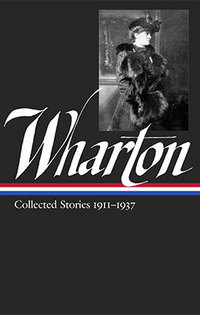
For years I was confounded by Edith Wharton’s ghost stories, not a genre I love, excepting James’ “Turn of the Screw,” some of Isaac Dinesen’s Tales and Angela Carter’s. At last I believe I understand these stories of the supernatural—there are seven of them—and I’ve come to admire them all. These ghost stories are not mere genre, not chills and thrills. They are about the liberty of the form itself, which gave her leave to turn from short fiction and novels on social themes, from her stories of The Great War which was also written from her world. At times in the ghost stories, her rational mind appears to dissect the weird and terrifying, to explain away the mysterious by references to an exotic setting, to the contemporary fashion for spiritualism, or the tradition of Celtic tales. It’s a wonderful ploy, for the stories themselves, my favorites are “Kerfol,” “Miss Mary Pask,” and “The Eyes,” transcend her rational explanation which is exactly what a ghostly world insists on, that it is the other place, other—beyond our understanding in being ghostly. I believe that these macabre stories were, for Edith Wharton, another way out, another departure and yet another entry into the penetrating observations on the destructive powers of human possession, the aftermath of dispossession and the haunting power of love. In “The Eyes” a man tells a ghost story and it turns out not to be about the terrifying eyes that have appeared to him at night when he ran from love and failed at generosity. “The Eyes” is literally another unmasking; Culwin’s story shatters the young man, Phil Frenham, his protégé, but it is most horribly about himself.
“Phil—what the deuce? Why, have the eyes scared you? My dear boy—my dear fellow—I never had such a tribute to my literary ability, never!”He broke into a chuckle at the thought, and halted on the hearth-rug, his hands still in his pockets, gazing down at the youth’s bowed head. Then, as Frenham still made no answer, he moved a step or two nearer.
“Cheer up, my dear Phil! It’s years since I’ve seen them—apparently I’ve done nothing lately bad enough to call them out of chaos. Unless my present evocation of them has made you see them; which would be their worst stroke yet!”
His bantering appeal quivered off into an uneasy laugh, and he moved still nearer, bending over Frenham, and laying his gouty hands on the lad’s shoulders.
“Phil, my dear boy, really—what’s the matter? Why don’t you answer? Have you see the eyes?”
Frenham’s face was still hidden, and from where I stood behind Culwin I saw the latter, as if under the rebuff of this unaccountable attitude, draw back slowly from his friend. As he did so, the light of the lamp on the table fell full on his congested face, and I caught its reflection in the mirror behind Frenham’s head.
Culwin saw the reflection also. He paused, his face level with the mirror, as if scarcely recognising the countenance in it as his own. But as he looked his expression gradually changed, and for an appreciable space of time he and the image in the glass confronted each other with a glare of slowly gathering hate. Then Culwin let go on Frenham’s shoulders, and drew back a step…
Frenham, his face still hidden, did not stir.
Edith Wharton’s stories often end with a sharp stroke of self-knowledge. She was fierce in her ability to look in the mirror, to see the damage of emotional inadequacy. A late story, “The Looking-Glass” is about an aging beauty conned by her Irish masseuse into believing she is still an object of desire. Turn to the stunning photo on the second volume of The Library of America’s Collected Stories: Edith Wharton in her prime is neither the arrogant lady authoress of “Xingu” nor the pathetic beauty of “The Looking-Glass.” The final stories are all about the ravages of time passing, time past. They are fresh still and they are wise.
“To a generation,” she wrote in an introduction to her Ghost Stories, “for whom everything which used to nourish the imagination because it had to be won by an effort, and then slowly assimilated, is now served up, cooked, seasoned and chopped into little bits…” Well, that’s Edith worrying about the influence of the wireless and moving pictures, but wanting to bring her tales of the supernatural before the public, to once again enchant her audience.
Entertaining, charming, instructing her readers with many stories was her habit by the time she came to write the introduction to her memoir, A Backward Glance. “Habit is necessary,” she tells us; “it is the habit of having habits, of turning a trail into a rut, that must be incessantly fought against if one is to remain alive. In spite of illness, in spite even of the arch-enemy sorrow, one can remain alive long past the usual date of disintegration if one is unafraid of change, insatiable in intellectual curiosity, interested in the big things, happy in small ways.”
In reading these stories, all of these stories, I think you will find that Mrs. Wharton was unafraid and always curious—necessary, transforming attributes for a great writer. Her stories are as fresh today as they were for her first readers who turned to them in anticipation in Scribner’s Magazine.
And then, on a winter night in Chelsea, we cut a triumph of a birthday cake, a glistening black cake frosted to look like The Library of America’s Collected Stories, Wharton writ large, soulful in her white sugar gown. We cut our cake for Edith.
